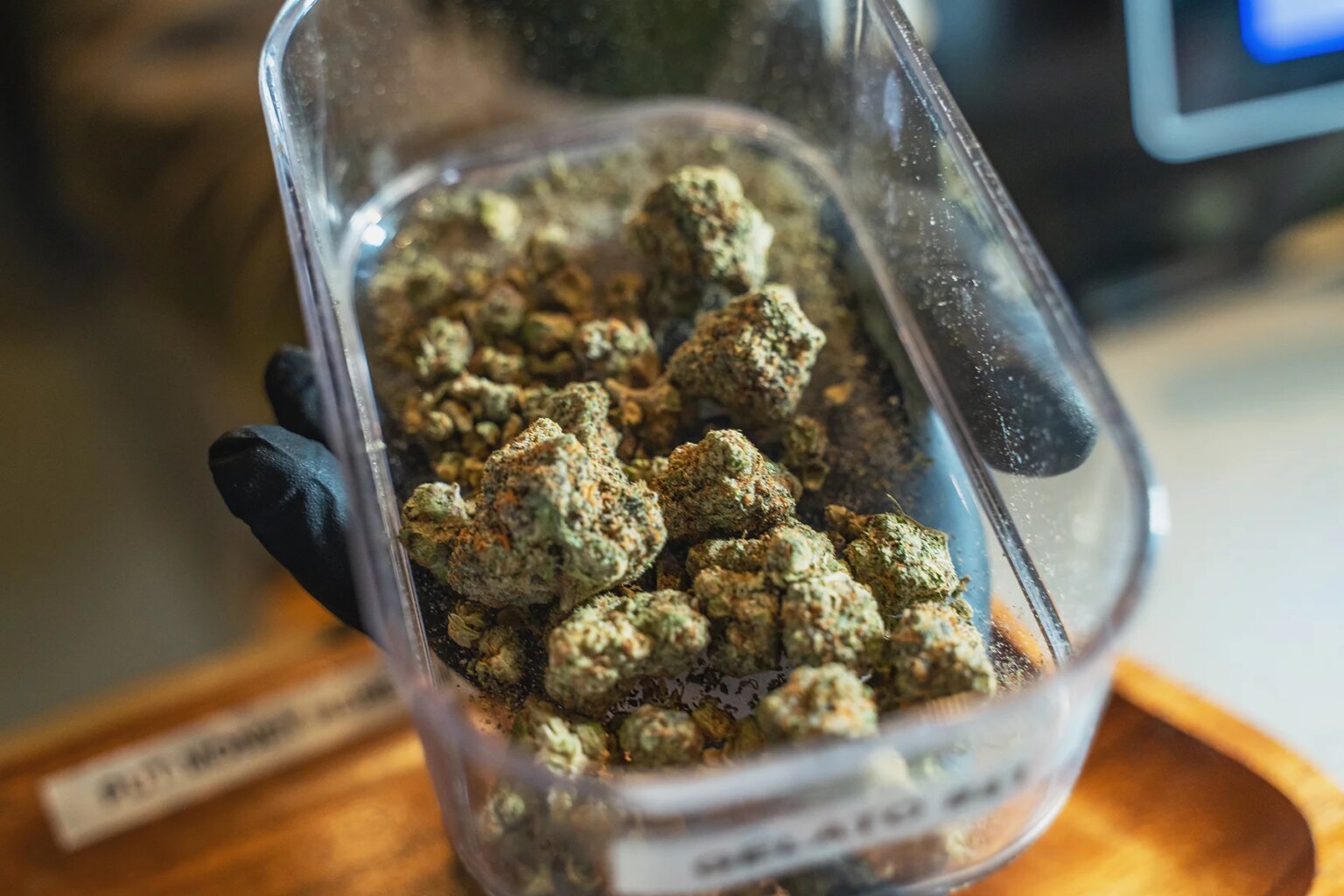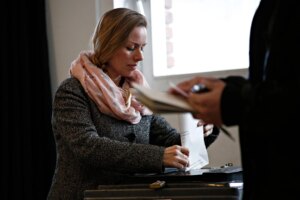Continue reading for the following information:
- Alcohol is no. 1 drug
- We live in a harder, faster world
- How the Dutch are tackling alcohol abuse in the young
- Cannabis is the second most popular drug followed by ecstasy
- The Netherlands has low percentage of drugs users compared to other countries
- Ecstasy used mostly by clubbers
- Netherlands main producer of ecstasy
- Making informed choices
- Is cannabis legal in the Netherlands?
- Will magic mushrooms be banned?
- Drug-testing services don’t encourage use
- Who administers the drugs policy in the Netherlands?
- What is the rationale for the Dutch policy on the use of soft drugs?
- How is the policy implemented in practice?
- What are the specific guidelines permitting the sale of soft drugs?
- What happens if these rules are broken?
- Is most of the cannabis produced in the Netherlands or imported?
- What are the penalties for producing and/or exporting large quantities of cannabis or other soft drugs?
- Is the Dutch government going to change its traditional tolerance policy towards soft drugs?
- So what changes are taking place?
- Are there differing views within the government about the way forward?
- What are the reasons behind the closing of some coffee shops?
- What specific measures are proposed to curb drug tourism?
- Does the Netherlands have a more serious drug problem than other countries as a result of the tolerant policy?
- Are there any public nuisance problems caused by cannabis users?
- Is cannabis available for medicinal purposes?
- Useful resources
Alcohol is no. 1 drug
“Alcohol use starts at between 11 and 14 years, and between the ages of 13 and 16, pupils start to drink on a weekly basis,” says Roel Kerssemakers, senior prevention worker at the Jellinek. This is an institute for the treatment of alcohol, drug and gambling problems, serving Amsterdam, het Gooi, and Vechtstreek.
“Suppose you compare alcohol with cannabis and look at pupils of 16 years. You can say that 77% used alcohol last month, while 15.6% used cannabis,” he says.
According to a 2019 report from the European Monitoring Centre of Drugs and Drug Addiction (EMCDDA), the use of alcohol in the young and very young has increased between 1997 and 2005. That although the percentage last year of users of cannabis, cocaine and amphetamines remained fairly stable among the general population in the Netherlands of 15 – 64 years.
Audray Wijks, a prevention worker at the Parnassia, which works on drug prevention and care in The Hague, Delft, Gouda, Leiden, and Zoetermeer, believes that a combination of individualism, a loss of both control and social communities is to blame for the increase in alcohol consumption in the young.
We live in a harder, faster world
“The world is faster and harder, which means you need to be tough to go with the flow. People have access via computers to a virtual life and parents have less control over their children’s actual lives,” says Wijks, who also sees the breakdown of family networks as a contributing factor.
How the Dutch are tackling alcohol abuse in the young
Addressing the issue, this year the Netherlands caught up with the majority of EU countries by proposing a partial or complete ban on alcohol advertising on radio and TV before 9 pm. Also, in June the Dutch cabinet agreed to a proposal to allow municipalities to decide whether to increase the drinking age for ‘weak’ alcoholic drinks from 16 to 18 and the government is looking into penalizing underage individuals for buying alcohol or being in possession of it. Under current legislation, only the shop and café owners can be prosecuted.
Cannabis is the second most popular drug followed by ecstasy
After alcohol, Cannabis is still the number one drug of choice in the Netherlands, followed by ecstasy.
Although the age when school-goers start using cannabis was stable between 1996 and 2003 and lies between 14 and 16, Kerssemakers says that the “General opinion about cannabis and the risks involved are more realistic now. Cannabis has risks: there is a risk of addiction and smoking is bad for your lungs. Now there is a lot of information about the risks which are also addressed in drug education.”
This awareness is perhaps reflected by an increase in the numbers of young people seeking help to deal with cannabis addiction. Parents and children also need to be aware that Dutch cannabis (nederwiet) is getting stronger, says Wijks.
Studies have shown nederwiet to have between 14 and 20 times more tetrahydrocannabinol (THC) – the active ingredient which makes users high – than imported varieties. The average THC concentration in Dutch home-grown cannabis peaked in 2003 (20%) and levelled off in 2004 and 2005 (18% in both years).
“Of schoolgoers between 12 and 18, 9% said they used cannabis last month. Of the same group, 20%, which is almost 2% of the total group, smokes more than 10 times a month,” says Kerssemakers.
The Netherlands has low percentage of drugs users compared to other countries
The number of problematic long-term users of heroine/cocaine/crack/amphetamines per 1000 inhabitants in the Netherlands is 2.2 to 4.3. In the UK the figures are 8.9 to 9.7, Spain: 7.1 to 9.9, Austria: 5.4 to 6.1, Sweden 4.5 (Sweden has a high percentage of amphetamine users), France: 3.8 to 4.8, and Germany: 1.2 to 3.0.
Of the Dutch population aged 15 to 64, 3.3% used cannabis last month, reveals Kerssemakers. “If you compare this figure with other countries you see that in Spain 8% of the population between 15 and 64 used cannabis last month, in Austria 4% of the same population, in Ireland 3%, in Belgium 3%, in Norway and Finland 2%, and in the US 10 to 14%,” he says.
Ecstasy used mostly by clubbers
“In the same population (15–64), 0.3% used XTC last month, and among pupils aged between 12 and 18, 1.2% used ecstasy last month. When asked ‘did you use XTC last night’, 8.2% of the clubbers said ‘yes’,” reports Kerssemakers.
Netherlands main producer of ecstasy
It is estimated that about 70% of the confiscated ecstasy tablets in the world are produced in the Netherlands: that is between 112 and 224 million tablets. The organization of the trafficking of amphetamines and ecstasy within Europe is controlled by Dutch criminal organizations, in collaboration with criminal organizations in the destination countries (Huisman 2005).
Making informed choices
Key to the lower drug usage figures in the Netherlands is perhaps the preventive methods employed by the Dutch.
The Netherlands has chosen the skill-oriented method to educate people about drug usage, an approach which involves making choices, solving conflicts and employing resilience; such as dealing with emotions and resisting group pressure.
This approach has proved to be the most effective says Kerssemakers. “We inform people in a neutral and objective way about the risks, based on scientific facts and not on all kind of prejudices. Also we accept that people have to make their own choices,” he says.
The other preventive methods are fear-oriented (warning) and objective-oriented (giving the facts).
Is cannabis legal in the Netherlands?
The sale of cannabis in the Netherlands is illegal, yet the Dutch turn a blind eye to coffee shops selling cannabis, if they adhere to certain criteria: no advertising, no sale of hard drugs, no sales to persons under 18, no causing of public nuisance and no sales of quantities of more than five grams per transaction. Coffee shops are also forbidden to sell alcohol or have more than 500 grams in stock and –in some cities–a minimum distance to a school or to the Dutch border is required.
“The difference between using and dealing has to do with the quantity of drugs you possess. If you have less than 5 grams of cannabis, 1/2 a gram of hard drugs or one tablet, you have a quantity which is considered as a quantity for own use. If you possess more than that you are considered a dealer,” says Kerssemakers.
Will magic mushrooms be banned?
Rather than outlawing mushrooms Kerssemakers predicts that the government will shortly outline a new policy, which will involve introducing new rules for smartshops such as making it illegal to sell mushrooms people under 18, making it obligatory for the people working in smartshops to follow a course, and obliging the outlets to give good information about the products they sell.
Drug-testing services don’t encourage use
Both Kerssemakers and Wijks confirm that drug testing services, such as those offered by the Jellinek and Parnassia, inform people as well as help keep track of the kinds of drugs being offered on the market. The existence of the service also perturbs producers from releasing dangerous substances onto the market.
In 2006, 80% of the tablets tested at the Jellinek contained XTC, while 6.7% of the tablets contained a completely different psychoactive substance. The average dose was 74 mg.
Who administers the drugs policy in the Netherlands?
To achieve a cohesive strategy, various ministries share the responsibility for drugs policy. The Ministry of Health, Welfare and Sport is responsible for overall coordination, prevention and care. The Ministry of Justice is responsible for law enforcement, while matters relating to local government or the police are dealt with by the Ministry of the Interior and Kingdom Relations. The ministries are assisted at the country’s borders by customs officers and the Royal Netherlands Military Constabulary.
What is the rationale for the Dutch policy on the use of soft drugs?
The national drug policy officially has four major objectives:
- To prevent drug use and to treat and rehabilitate drug users.
- To reduce harm to users.
- To diminish public nuisance by drug users (the disturbance of public order and safety in the neighborhood).
- To combat the production and trafficking of drugs.
How is the policy implemented in practice?
The Dutch take a pragmatic approach to social problems. Recognizing that it is impossible to prevent people using drugs, the Dutch solution is to allow the controlled use of small amounts of soft drugs, thus decriminalizing a large proportion of soft drugs use, and divert resources to go after the criminals who profit from drugs, and those who supply hard drugs. It’s a policy that has worked well within the Netherlands for decades, but is coming under strain due to the free flow of people within the European Union.
Since 2004, it has become clear that organized crime is involved in large-scale cannabis cultivation in the Netherlands, and the authorities are now trying to catch and convict the offenders. As well as the ministries and other public bodies, parties such as energy companies and housing corporations are now actively involved in helping to identify and take action against the criminals. The guilty now run the risk of eviction from their homes, tax bills for undeclared income, bills and fines for theft of electricity, cuts in social security benefits, and penalties for not having the right permits.
What are the specific guidelines permitting the sale of soft drugs?
Under the guidelines issued by the Public Prosecution Office on 1 January 2001, coffee shops are not prosecuted for selling cannabis providing they observe the following rules:
- they may not sell more than five grams per person per day.
- they may not sell ecstasy or other hard drugs.
- they may not advertise drugs.
- they must ensure that there is no nuisance in their vicinity.
- they may not sell drugs to persons aged under 18 or even allow them on the premises.
What happens if these rules are broken?
If the rules set out above are not observed, the premises are closed down and the owners or management may be prosecuted. Under the official drug guidelines, coffee shops may stock up to 500 grams of cannabis without facing prosecution. Municipalities may impose additional rules on coffee shops in order to avoid nuisance.
Is most of the cannabis produced in the Netherlands or imported?
Some of the cannabis sold in the coffee shops is imported from countries such as Morocco and Pakistan. However, cannabis produced in the Netherlands – called nederwiet in Dutch – has become increasingly popular. Nederwiet is much stronger than the traditional imported cannabis.
Depending on the quality, coffee shop owners pay between €3,500 and 5,500 per kilo to cannabis growers. In 2008, 720 Dutch coffee shops sold some 255,000 kilograms of soft drugs, mostly grown in the Netherlands. Police estimate that only 20 to 40% of the Dutch marijuana is sold locally. The majority is exported.
The Dutch tax authority receives some €400 million on value added tax originating from the sale of the soft drugs sold in local coffee shops. The total turnover in the soft drugs business is around two billion euros. This figure is comparable to the turnover of Dutch public transport.
The government is giving high priority to the investigation and prosecution of those engaged in the large-scale production of nederwiet, especially those who export large quantities. Despite this, there is always plenty available in the coffee shops. Small quantities that are obviously intended only for personal use are not targeted for prosecution, though technically even small-scale production is an offense.
What are the penalties for producing and/or exporting large quantities of cannabis or other soft drugs?
Penal provisions are considerably milder than those for hard drugs. Moreover, a distinction is made between drug users and traffickers. Possession of soft drugs and hard drugs for commercial purposes is therefore considered a more serious offense than possession for individual consumption. For soft drugs the penalty varies from one-month detention and/or a fine of 2,250 euros for possession, selling or production of up to 30 grams, to a maximum four years imprisonment and/or a fine of 45,000 euros for import and export of large quantities.
Is the Dutch government going to change its traditional tolerance policy towards soft drugs?
No. While cannabis remains illegal, the authorities turn a blind eye towards the sale of small amounts in coffee shops. On the other hand, the law is still enforced against those growing marijuana and supplying the coffee shops. The Dutch authorities see an advantage in selling soft drugs in coffee shops, as it stops many users from having to make contact directly with drug dealers in the criminal underworld, thus limiting the chance that they will be persuaded to move on to hard drugs.
So what changes are taking place?
The number of coffee shops in the Netherlands is being scaled back. At the end of 2008, Amsterdam had 228 coffee shops where the sale and use of small amounts of marijuana and hashish is permitted. However a new national government policy dictates that coffee shops will not be allowed to operate within 250 meters of a school. As a result, in November 2008 Amsterdam announced it was closing down 43 premises. At the same time city mayor Job Cohen insisted the city was standing by its three-decade old policy of tolerating soft drug sales.
Are there differing views within the government about the way forward?
Certainly. Dutch governments are invariably coalitions, and the three coalition parties in the current government have long disagreed about the overhaul of the drug policy. The Christian Democrat CDA had called for an end to the tolerance policy and the orthodox Christian Union supported that position, but senior coalition partner, the Labour Party (PvdA), believes banning coffee shops will not solve the problems of crime, nuisance and health. In September 2009, a compromise was announced, designed to stem the flow of ‘drugs tourists’.
Related article: Sale of cannabis on its way out?
What are the reasons behind the closing of some coffee shops?
The biggest problem is caused by so-called “drugs tourists”, that is people who come to the Netherlands specifically to take advantage of the tolerant policies which are missing in their own countries. The influx of these drugs tourists to the border provinces has led to complaints of nuisance from local residents, and has been a source of tension with neighboring countries.
Coffee shops will be allowed to continue operating, but the cabinet wants to introduce measures to stem the flow of tourists. The final decision about whether and where coffee shops may be opened belongs with the local authorities and mayors will have powers to keep the coffee shops small and turn away tourists.
What specific measures are proposed to curb drug tourism?
One of the schemes under consideration is a pass system. In August 2009 the government earmarked 150,000 euros for a trial run in Maastricht that will involve turning coffee shops into private clubs requiring customers to show proof of membership at the door. It’s not clear whether tourists will be eligible for membership.
Local authorities will also be allowed to experiment with the maximum quantities of cannabis on sale. The cabinet is also considering whether to allow trials with greater stock levels in coffee shops in order to reduce the nuisance caused by drug runners. These flag down foreign tourists and try to lure them to coffee shops, creating hazardous scenes on motorways.
Related articles:
Canna-pass curbs coffee shop tourism
Does the Netherlands have a more serious drug problem than other countries as a result of the tolerant policy?
Definitely not. Drug use in this country is average compared to that of other European countries. The number of addicts and drug casualties is one of the lowest in Europe. Far fewer people have been convicted for selling or using drugs than in other countries, because of the decriminalization of drug use and the sale of soft drugs in coffee shops. Furthermore, the figure for drug-related deaths in the Netherlands is just 2.4 per million inhabitants, the lowest in Europe.
The latest figures available are for the period 2001–2005, when the percentage of users in the population aged 15-64 remained stable at 3.3%. That’s equivalent to 363,000 users at any one time. 5% of the Dutch population have recently used cannabis according to the European Monitoring Centre for Drugs and Addiction. The use of cannabis by schoolchildren peaked in 1996, but has subsequently seen a gradual decline. 17% of young people have tried cannabis at least once, and 8% have done so in the past month. Use of cannabis among boys is slightly higher than among girls.
Are there any public nuisance problems caused by cannabis users?
In general, no. Nuisance is generally localized around the coffee shops, and the vast majority of the Dutch population have no day-to-day contact with drugs or drug users. There used to be a problem, particularly in hot weather, when the sickly smell of cannabis would linger in public places long after the smokers had departed. This was especially noticeable on public transport. But now smoking is banned in most enclosed public places in the Netherlands, including trains and buses, and the non-user rarely encounters the smell of cannabis except fleetingly in the larger cities.
Is cannabis available for medicinal purposes?
Yes. In the late 1990s it became apparent that a significant number of patients were using cannabis obtained from illegal or unofficial sources to help ease their symptoms. Since September 2003, doctors are allowed to prescribe medicinal cannabis, which is available from pharmacies, but only under prescription.
Useful resources
You can find useful links to websites with information on drugs and addiction in English.
- Report on the Drug Situation 2006 written for the European Monitoring Centre of Drugs and Drug Addiction (EMCDDA)
- Netherlands Institute of Mental Health and Addiction
- Ministry of Health, Welfare, and Sports
- Ministry of Justice
- Jellinek Addiction Care Amsterdam
- Centre for Drug Research, University of Amsterdam
- Municipal Health Service of Amsterdam
- Statistics Netherlands
- HIV Monitoring Foundation (HMF)







